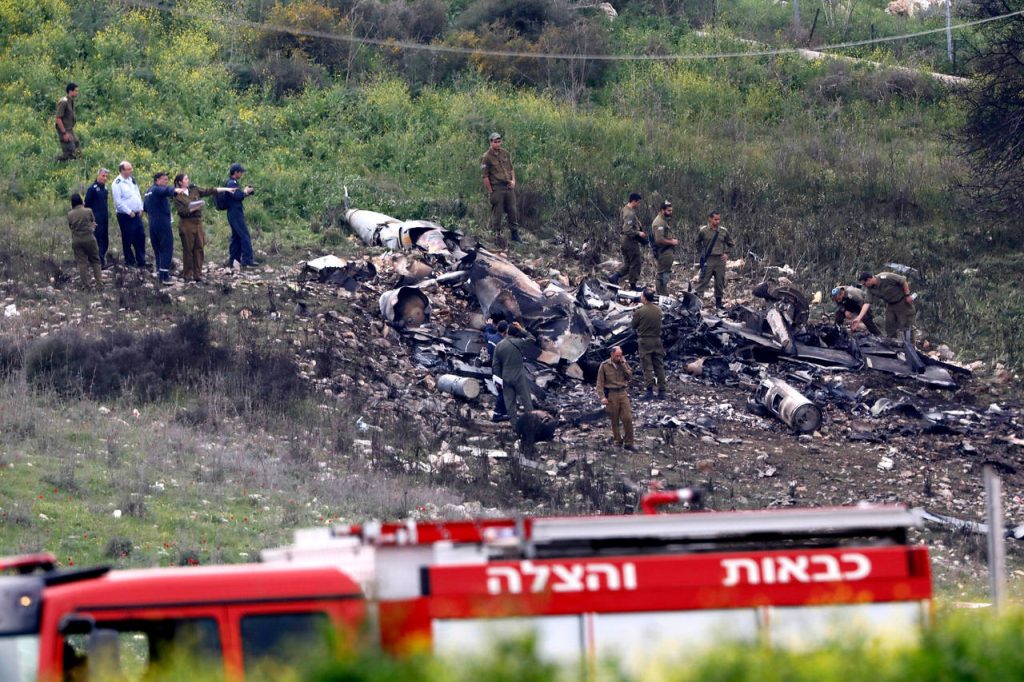UPDATES
This weekend’s Israeli-Iranian clashes in Syria
February 12, 2018

Update from AIJAC
Update 02/18 #04
As readers will be hopefully aware, there was a major escalation in the undeclared conflict between Israel and Iran over Syria on Saturday. An Iranian drone entered Israeli airspace and was then shot down, (video of the drone being shot down can be seen here); then Israel attacked the drone’s controlling base in Eastern Syria near Palmyra, but lost one F-16 jet over Israel to a massive barrage of Syrian anti-aircraft missiles on the way back (footage of the jet’s crash is here – both pilots were hurt but survived.) In retaliation, Israel then struck a series of 12 additional sites in Syria, including numerous Syrian anti-aircraft sites, as well as “four Iranian targets that are part of Iran’s military establishment in Syria.”

IDF map of the aircraft sites in Syria that were struck on Saturday.
Israel says it caused serious harm to Syria’s air defence systems.
This Update is devoted to analysis of what is going on in this escalation and where it might lead.
We lead with a piece analysing the events from American experts Tony Badran and Jonathan Schanzer of the Foundation for the Defence of Democracies – the latter of whom is currently in Australia as a guest of AIJAC. They explore how these events are the result of a situation whereby Iran was exploiting the chaos in Syria to build up military assets targetting Israel, and to send advanced weaponry to Hezbollah in Lebanon, while Israel is trying to stop that from happening through occasional airstrikes. They also canvas Israel’s likely calculation about what to do next, and the American and Russian roles in the conflict. For Badran and Schanzer’s perspicacious analysis, CLICK HERE. More on how the weekend’s violence should be seen as the first violence of a brewing Israeli-Iranian war comes from Israeli writer Yaakov Katz, Israeli academic Eyal Zisser and former IDF spokesman Peter Lerner.
Next up is Israeli security writer Yossi Yehoshua from Yediot Ahronot, one of Israel’s largest dailies. Yehoshua ties this current round of violence to a larger and much more intense conflict with Iran client Hezbollah that is expected sometime in the next few years. He says in such a conflict, Hezbollah will likely launch dozens of drones as well as up to a thousand missiles a day, and will be keen to prevent Israeli aircraft from doing anything about it, thus the Iranian efforts to deter Israeli aircraft from intervening in Syria. Meanwhile, Israel has no choice but to strengthen its deterrence vis-a-vis Syria and Lebanon – as well as reach an understanding with the Russians. For Yehoshua’s interesting analysis in full, CLICK HERE.
Finally, Haaretz’s Anshel Pfeffer explores the Russian angle in the latest events in more detail. He says while Israel has a hotline to the Russians in Syria, the Russian message in the aftermath of these events is that they will not object to Israeli attacks in Syria as long as they do not threaten the regime, but they will not stop the Syrians or Iranians from shooting at Israeli planes or occasionally invading Israeli airspace. Pfeffer suggests this means Israel will have no choice but have to exercise more caution, and must to some extent defer to Putin’s rules in Syria. For more on the Russian element in this equation, CLICK HERE. Meanwhile, a good article on what the Americans can and should be doing to support Israel’s security needs in Syria comes from former US Ambassador to Israel Daniel Shapiro.
|
|
|
|
|
|
|









